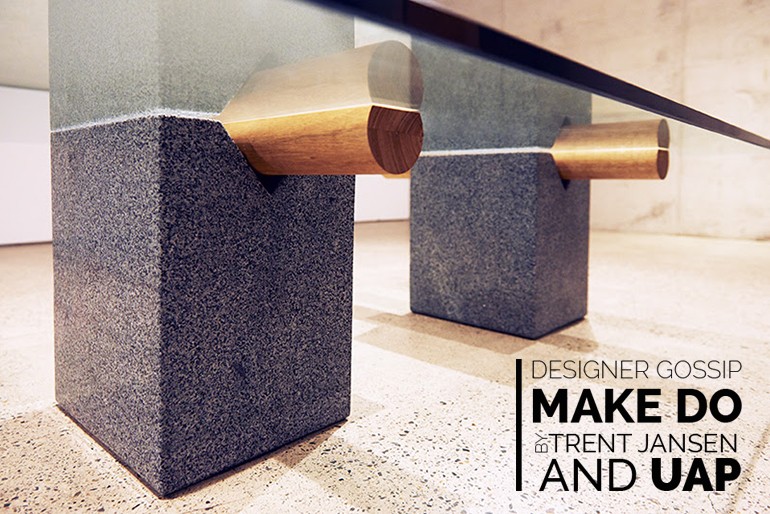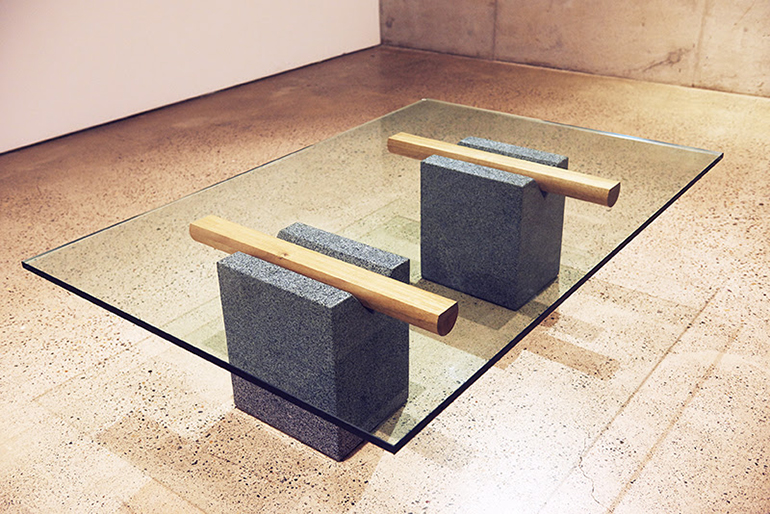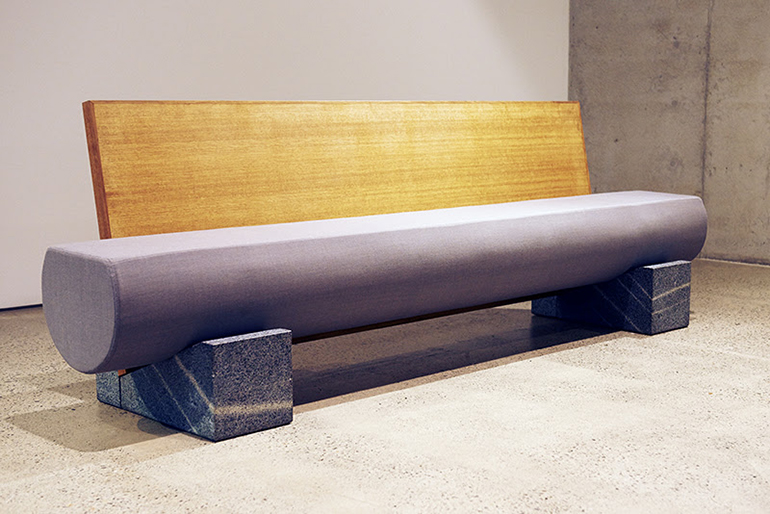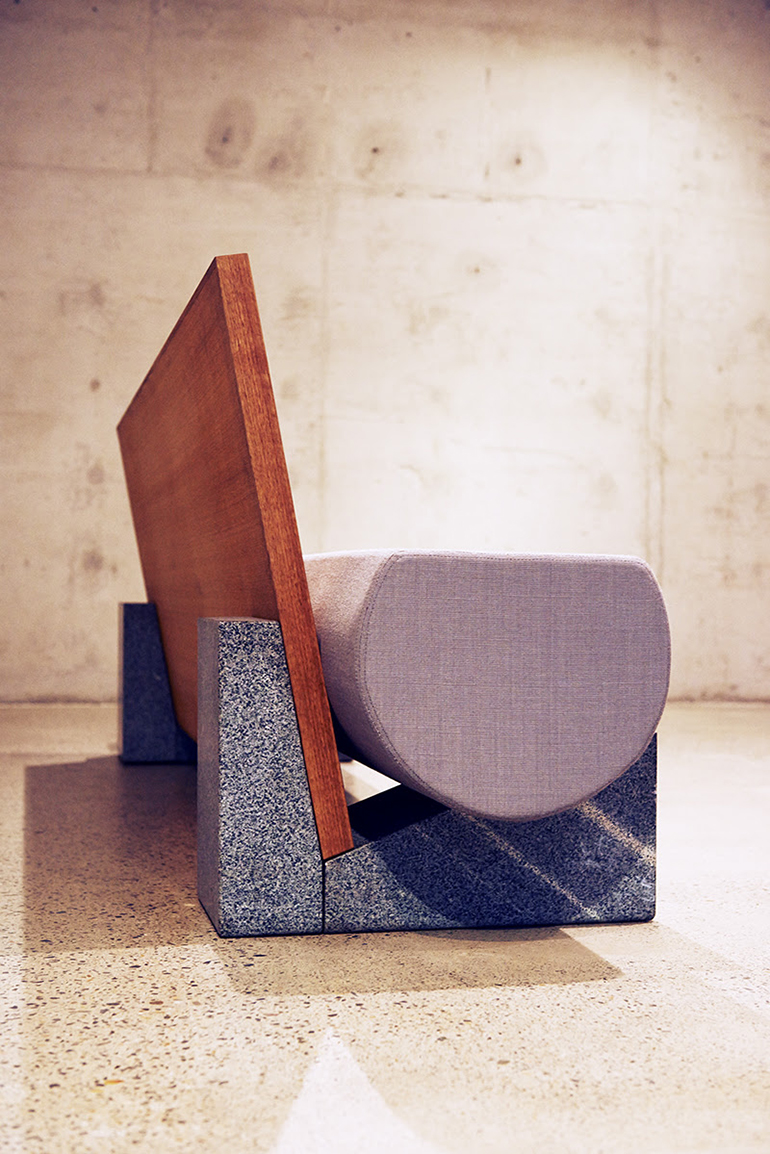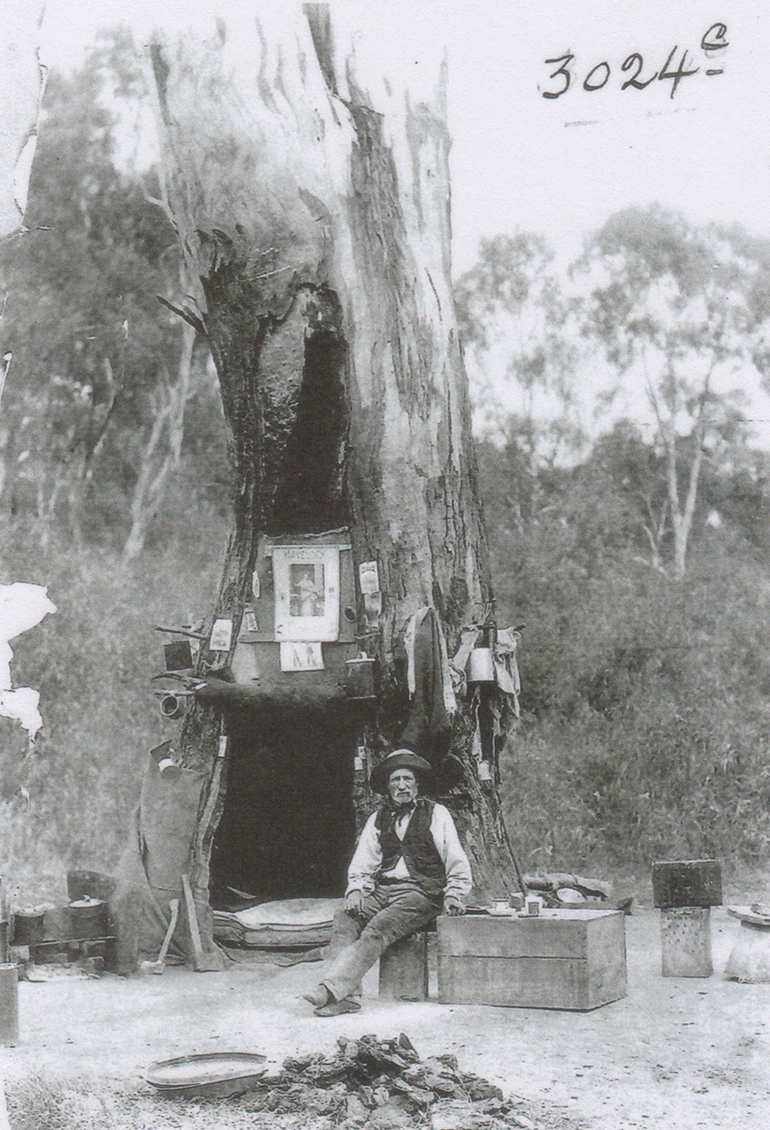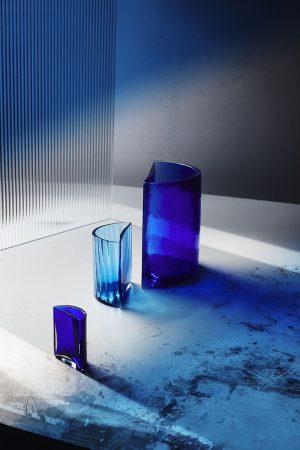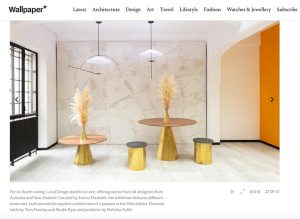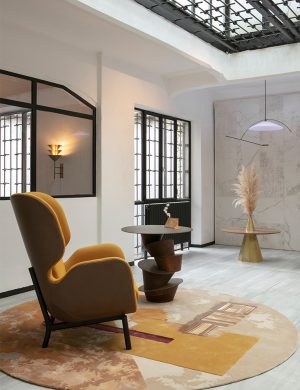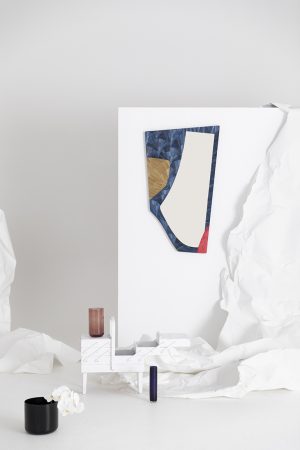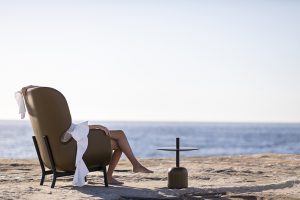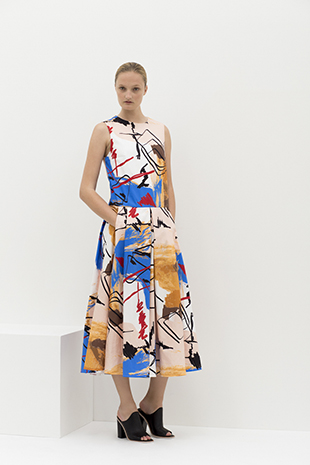DESIGNER GOSSIP | MAKE DO | BY TRENT JANSEN & UAP
Recently Australian designer Trent Jansen has been working on a collection of public space furniture for UAP, this new collection has just been released, called Make Do. UAP and Trent were commissioned to develop this collection into a group of furniture pieces for the UNSW Galleries. The full collection consists of: Make Do Seat, Bench and Coffee Table, and now sits in the foyer of the UNSW Galleries in Paddington, NSW.
The Make Do Bench, Seat and Coffee Table are influenced by the make do attitude that was born on the Australian frontier during the 19th Century. These objects adopt a simple making technique, cradling a log in a series of wedges, in order to provide a humble seating surface. Each component of the Make Do Bench, Seat and Coffee Table is available in a large range of materials and finishes, allowing the commissioner to customise their furniture, combining materials such as Australian native timbers, sandstone, marble, granite, brass, mild steel and any colour in the Dulux powder coat palette.
The story behind Trent’s concept is from the 19th Century where the Australian frontier was forged as squatters and selectors moved across the open country, claiming parcels of land on which to settle and develop industry that might sustain the colonies. In the harshest of conditions, these individuals worked in great isolation, clearing the virgin bush and transforming it into grazing land (Hooper and Hooper 1988). The frontier population was so sparse that amenities of all kinds were virtually non-existent, and this lack of service fostered a particular character trait in many frontier Australians, whereby men and women living in these circumstances were forced to improvise to survive – to make do.
When it came time to sit, eat or sleep on the frontier, the make do philosophy was turned to the task of making furniture. These objects were made by hand, using any available materials and employed only the simplest of bush carpentry techniques (Cornall, McAlpine et al. 1990). These objects were fashioned using any means possible, with little time or concern for neatness or appropriate method. “The very crudeness of this furniture is a reflection of the harsh and difficult lives of those who made it” (Hooper and Hooper 1988, p13). The only priority was in the construction of a functional object in a short period of time, using as few resources as possible (Cornall, McAlpine et al. 1990), so not to take away from the time and resources required for endeavours more closely connected to survival.
Product Images by Roger D’Souza
© LOCAL DESIGN

